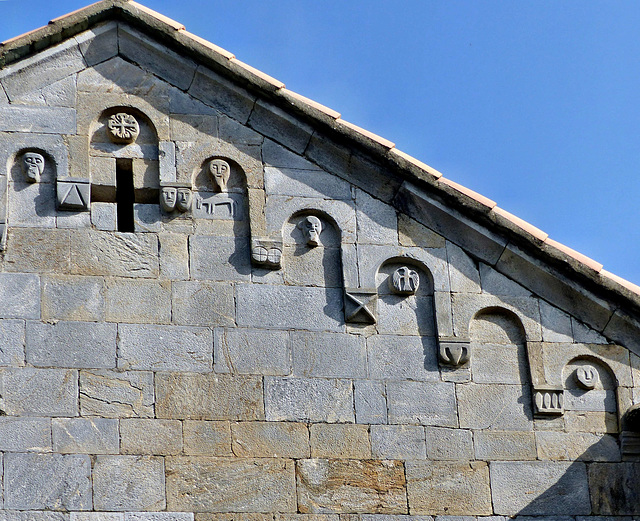Santo-Pietro-di-Tenda - Couvent Saint-Joseph
Santo-Pietro-di-Tenda - Couvent Saint-Joseph
Santo-Pietro-di-Tenda - Couvent Saint-Joseph
Santo-Pietro-di-Tenda - Couvent Saint-Joseph
Erbalunga - Tour d'Erbalunga
Col de Santa Lucia
Canari
Canari - Santa Maria Assunta
Canari - Santa Maria Assunta
Canari - Santa Maria Assunta
Canari - Santa Maria Assunta
Canari - Santa Maria Assunta
Canari - Santa Maria Assunta
Canari - Santa Maria Assunta
Canari - Le Campanile
Nonza - Santa Giulia
Nonza - Santa Giulia
Nonza - Santa Giulia
Nonza - Santa Giulia
Saint-Florent - Cathédrale de Nebbio
Saint-Florent - Cathédrale de Nebbio
Saint-Florent - Cathédrale de Nebbio
Saint-Florent - Cathédrale de Nebbio
Santo-Pietro-di-Tenda - Couvent Saint-Joseph
Santo-Pietro-di-Tenda - Couvent Saint-Joseph
Santo-Pietro-di-Tenda - Couvent Saint-Joseph
Santo-Pietro-di-Tenda - Saint Jean
Murato - San Michele de Murato
Murato - San Michele de Murato
Murato - San Michele de Murato
Murato - San Michele de Murato
Murato - San Michele de Murato
Murato - San Michele de Murato
Murato - San Michele de Murato
Murato - San Michele de Murato
Murato - San Michele de Murato
Murato - San Michele de Murato
Murato - San Michele de Murato
Murato - San Michele de Murato
Murato - San Michele de Murato
Murato - San Michele de Murato
Murato - San Michele de Murato
Murato - San Michele de Murato
Murato - San Michele de Murato
Murato - San Michele de Murato
Location
Lat, Lng:
You can copy the above to your favourite mapping app.
Address: unknown
You can copy the above to your favourite mapping app.
Address: unknown
See also...
Keywords
Authorizations, license
-
Visible by: Everyone -
All rights reserved
-
170 visits
Santo-Pietro-di-Tenda - Couvent Saint-Joseph


The island of Corsica is one of the 18 regions of France. It was colonized the Carthaginians, the Greeks, the Etruscans and the Romans. After the Roman empire collapsed, Corsica got invaded by the Vandals and the Ostrogoths. For a short while the island belonged to the Byzantine Empire, then the Franks granted the island to the Pope, in the early 11th century Pisa and Genoa together freed the island from the threat of Arab invasion. The island came under the influence of the Republic of Pisa, later it belonged to Genua for centuries. In 1755 after a long fight for independence from Genoa the independent Corsican Republic was proclaimed, but in 1769, when the island was conquered by France. As the areas near the coast over centuries have been threatened by attacks and raids of pirates many old hamlets and dwellings are wide inland, high in the mountains. So most of the old churches are in the mountains and some of them are hard to find.
The former convent of San Giuseppe (Saint Joseph) is an ensemble of a Romanesque church from the late 12 century and the adjoining Capucin monastery founded in 1552 and erected from 1630 on. It was founded by Mariano de Nebbio, founder of the Capuchin province of Corsica. In 1796, the monks were expelled and the convent sold as national property. It is in the center of agricultural land with trees and shrubs.
It was very much in ruins, when it was privately bought in the early 1970s and since then the owners are rebuilding and renovating the old structure. It seems to be an endless task. The owners were very friendly, let us in and showed us around. Merci beaucoupl
More details of the facade of the Romanesque church.
The former convent of San Giuseppe (Saint Joseph) is an ensemble of a Romanesque church from the late 12 century and the adjoining Capucin monastery founded in 1552 and erected from 1630 on. It was founded by Mariano de Nebbio, founder of the Capuchin province of Corsica. In 1796, the monks were expelled and the convent sold as national property. It is in the center of agricultural land with trees and shrubs.
It was very much in ruins, when it was privately bought in the early 1970s and since then the owners are rebuilding and renovating the old structure. It seems to be an endless task. The owners were very friendly, let us in and showed us around. Merci beaucoupl
More details of the facade of the Romanesque church.
- Keyboard shortcuts:
Jump to top
RSS feed- Latest comments - Subscribe to the comment feeds of this photo
- ipernity © 2007-2025
- Help & Contact
|
Club news
|
About ipernity
|
History |
ipernity Club & Prices |
Guide of good conduct
Donate | Group guidelines | Privacy policy | Terms of use | Statutes | In memoria -
Facebook
Twitter

Sign-in to write a comment.